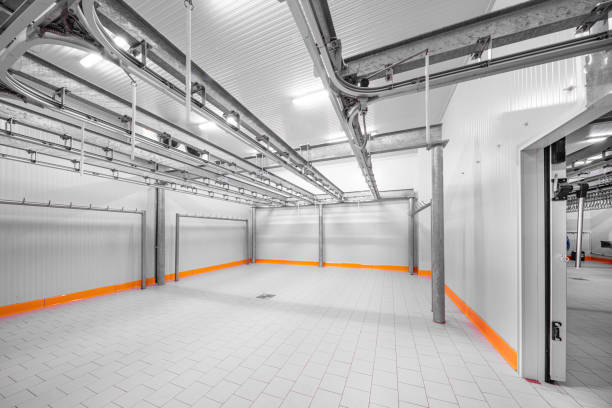The Indispensable Chill: A Look Inside Cold Rooms
Cold rooms are the unsung heroes of many industries, providing a vital environment for storing and preserving a vast array of products. These temperature-controlled spaces, ranging from walk-in closets to industrial warehouses, keep items fresh, safe, and ready for use. But what exactly goes on inside a cold room, and how do these spaces benefit us?
The Science of Chill
At the heart of every cold room lies a powerful refrigeration system. It works similarly to a household refrigerator, but on a much larger scale. A compressor pumps refrigerant gas, which heats up under pressure. This hot gas then travels to condenser coils, where it releases heat to the surrounding air (often aided by fans) and condenses back into a liquid. The cooled liquid refrigerant then moves through expansion valves, dropping its pressure and temperature further. Finally, it reaches evaporator coils inside the cold room. Here, the refrigerant absorbs heat from the air, causing it to cool down. A fan circulates this chilled air throughout the room, maintaining a constant, pre-set temperature.
A World of Cold Rooms
Cold rooms come in various sizes and configurations to suit specific needs. Here’s a glimpse into some of their applications:
Food and Beverage: The most common use of cold rooms is in the food and beverage industry. Restaurants, grocery stores, and food processing plants rely on them to store everything from fresh produce and dairy products to meat and beverages. Cold rooms maintain optimal temperatures that slow down spoilage, ensuring food safety and extending shelf life.
Pharmaceuticals: Many medications and vaccines require precise temperature control to maintain their potency. Cold rooms provide a stable environment for storing these delicate products, guaranteeing their effectiveness and safety for patients.
Scientific Research: Biological samples, tissues, and chemicals used in research labs often need to be stored at specific cold temperatures. Cold rooms offer the ideal environment for these materials, preserving their integrity and ensuring the validity of scientific experiments.
Floral Industry: Fresh flowers thrive in cool, controlled environments. Cold rooms help florists keep their blooms fresh and vibrant for longer, minimizing waste and maximizing customer satisfaction.
Fine Art and Antiques: Certain works of art and antiques, like paintings and historical artifacts, are susceptible to damage from heat and humidity. Cold rooms can provide a stable climate that helps preserve these valuable items.
Beyond Temperature Control
While temperature is a primary concern, some cold rooms incorporate additional features to optimize storage conditions. Humidity control systems can be integrated to prevent mold growth on certain products. Flooring materials with good anti-slip properties ensure safety when navigating the cold room. Lighting designed for low-temperature environments allows for easy visibility without affecting the internal temperature.
Safety First
Working in cold rooms requires proper safety precautions. The cold temperatures can lead to hypothermia if workers aren’t dressed appropriately. Slip-resistant footwear is crucial to prevent falls on potentially wet floors. Additionally, proper ventilation is essential to prevent the buildup of carbon dioxide from refrigeration systems.
The Future of Cold Rooms
The cold room industry is constantly evolving. Sustainable practices are gaining traction, with manufacturers developing energy-efficient refrigeration systems and using eco-friendly insulation materials. Technological advancements are also leading to the integration of remote monitoring systems, allowing for real-time temperature and humidity control.
In conclusion, cold rooms are more than just refrigerated spaces. They are vital tools for various industries, ensuring the freshness, safety, and quality of countless products we rely on every day. As technology advances and sustainability concerns become paramount, the cold room of the future promises to be even more efficient and environmentally responsible.



Comments are closed.